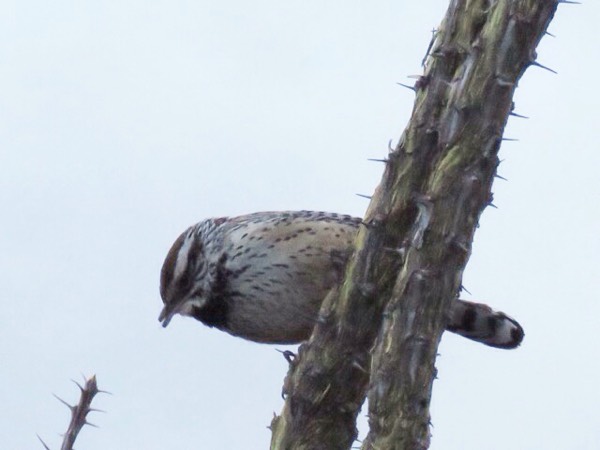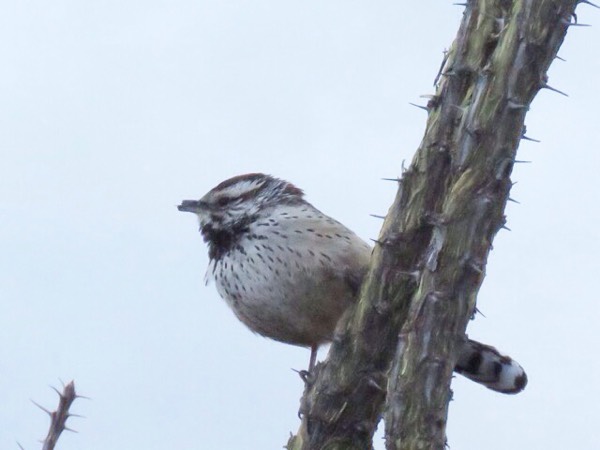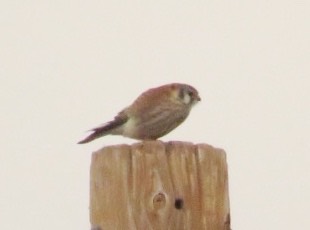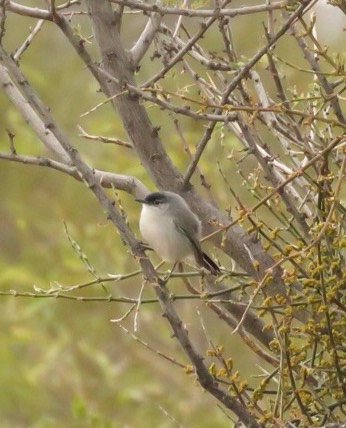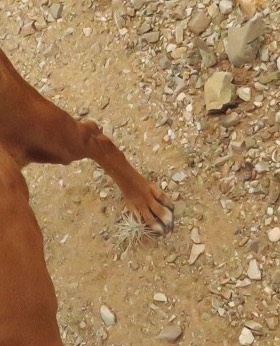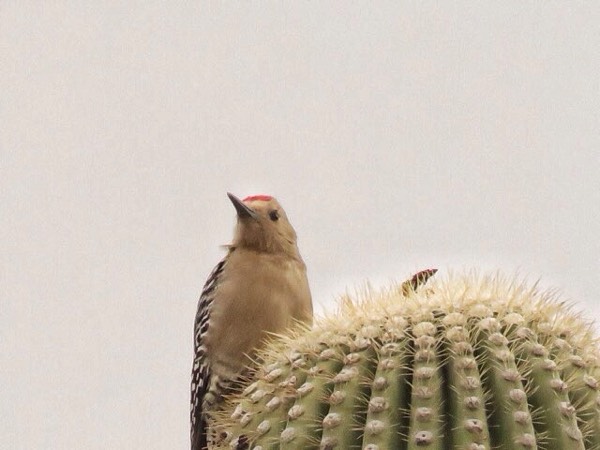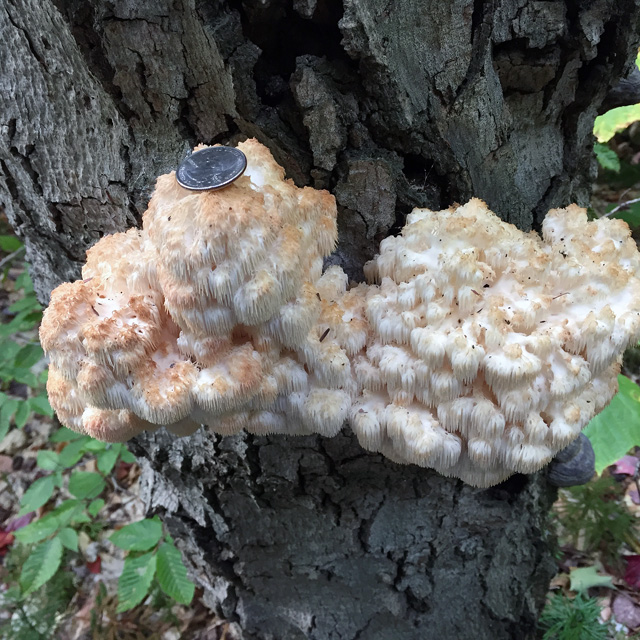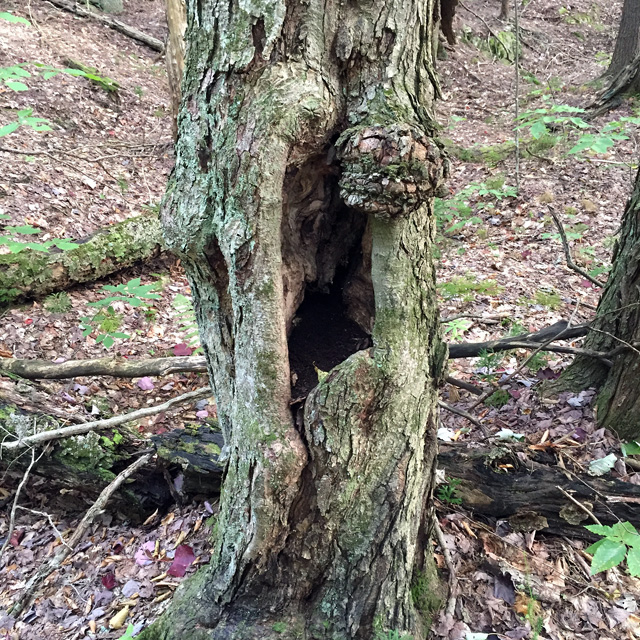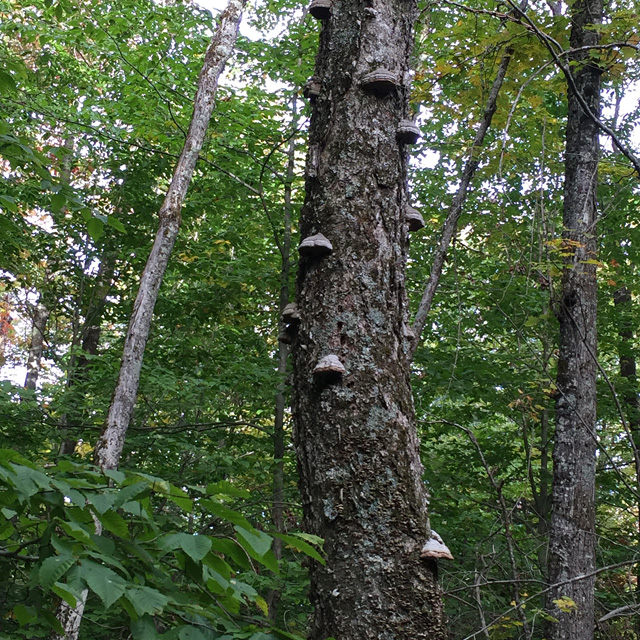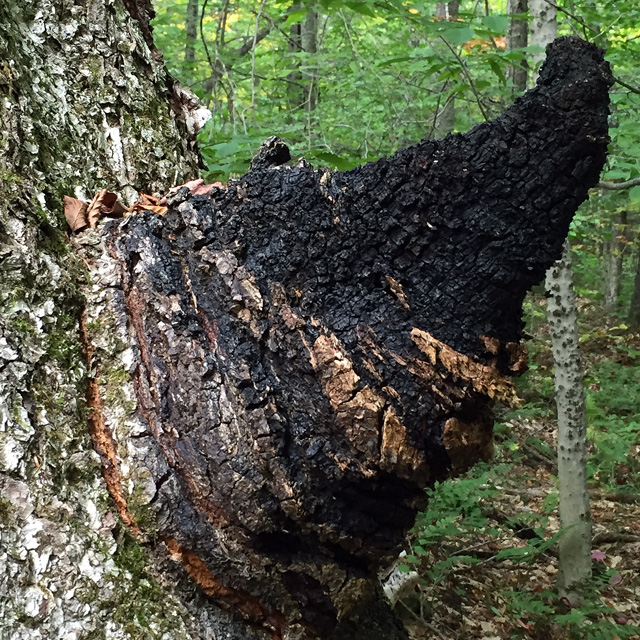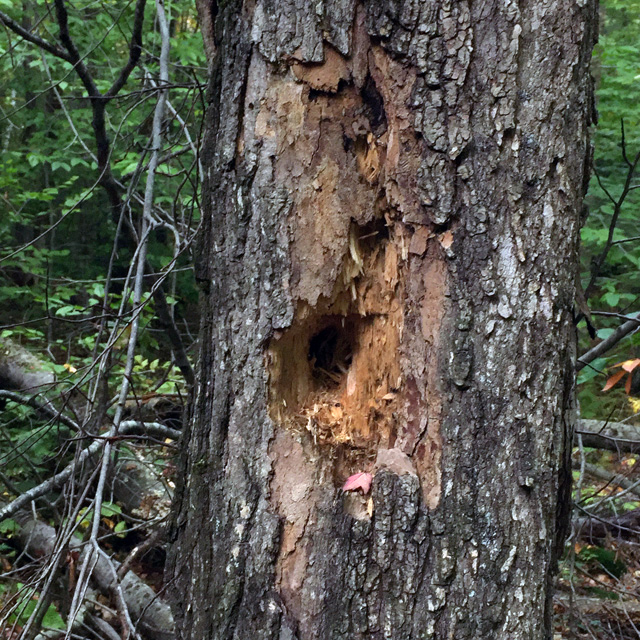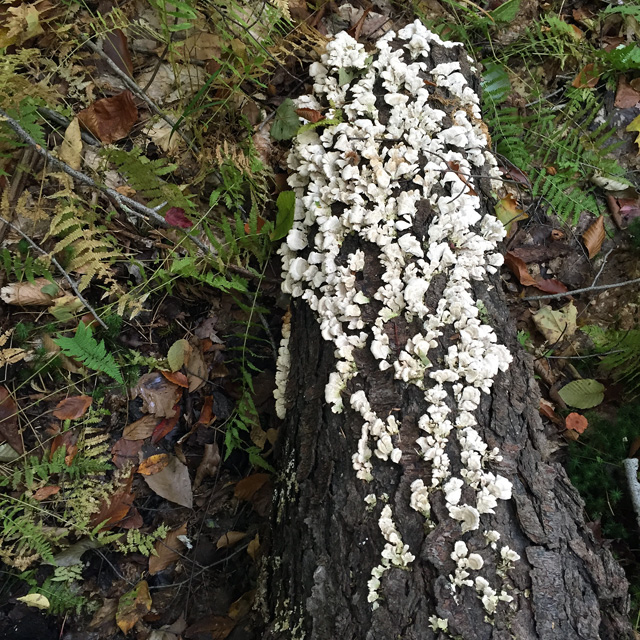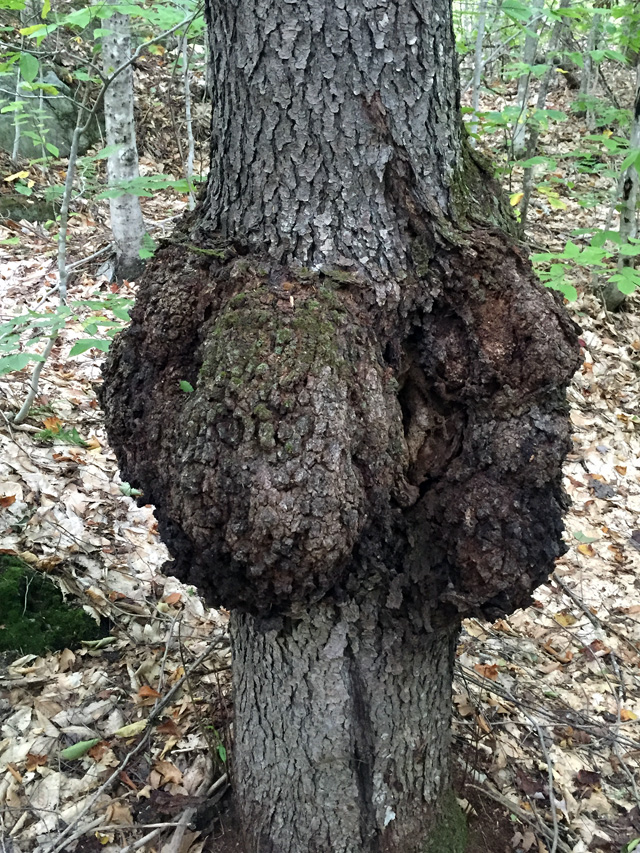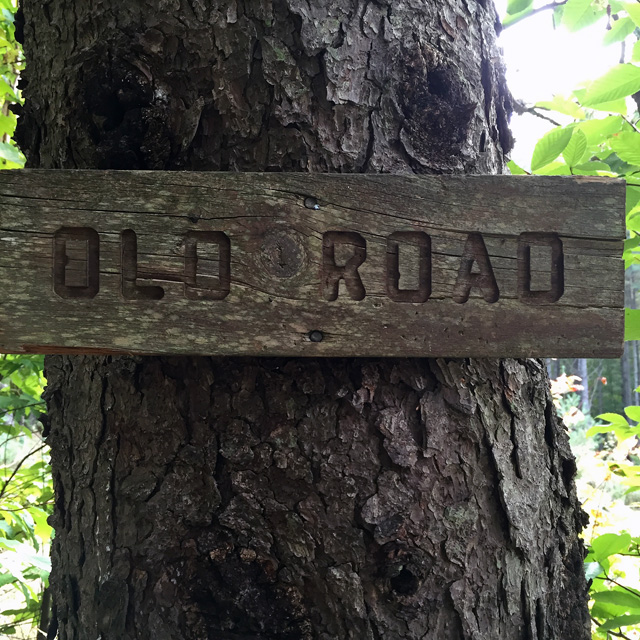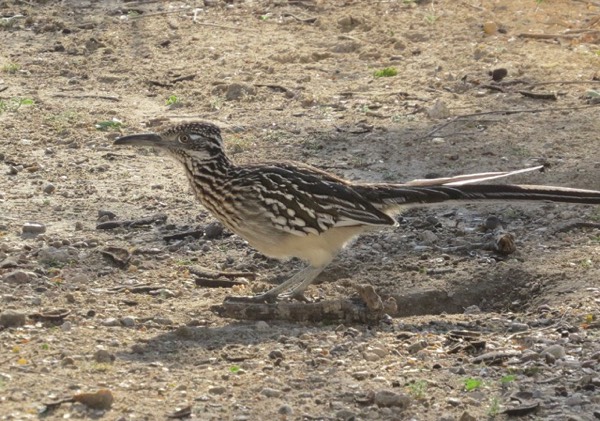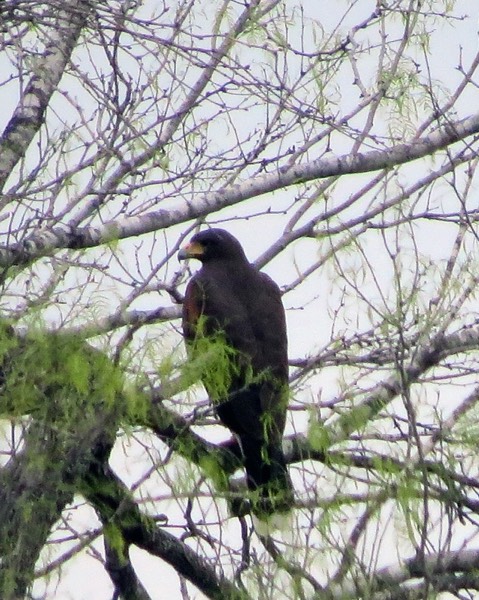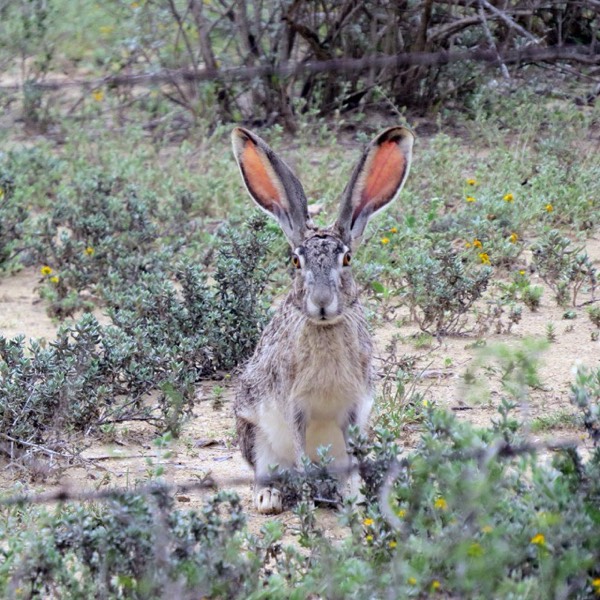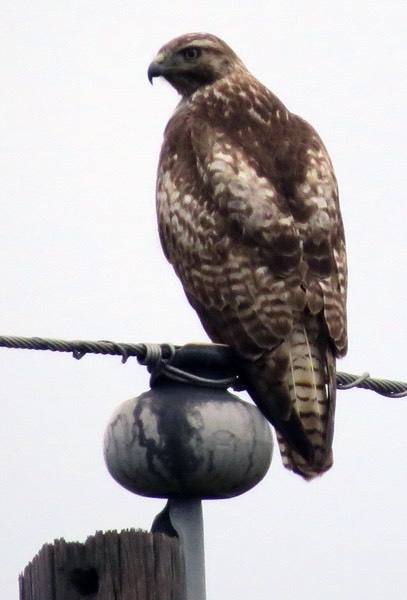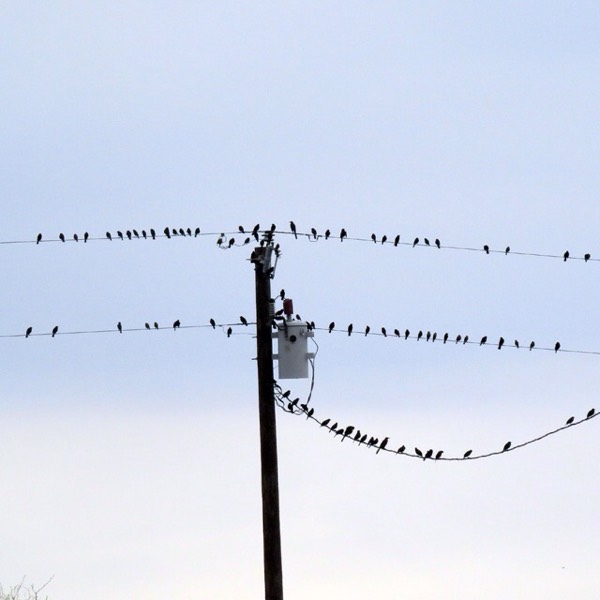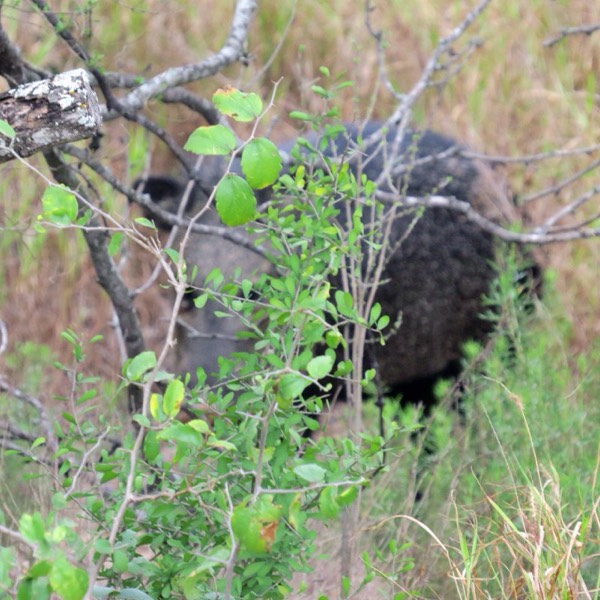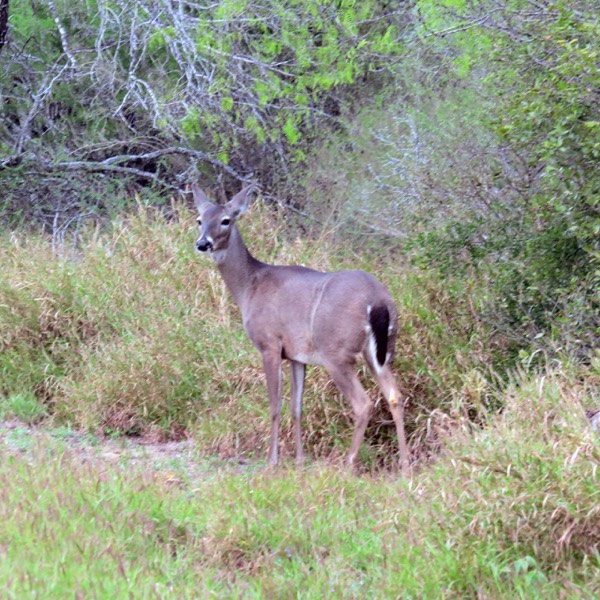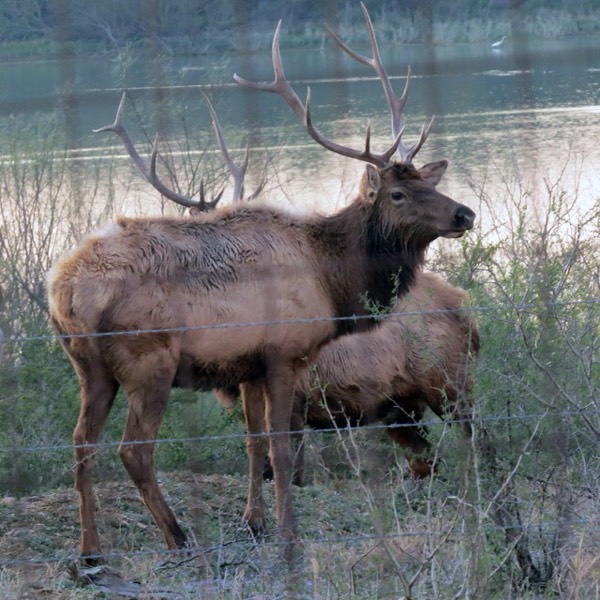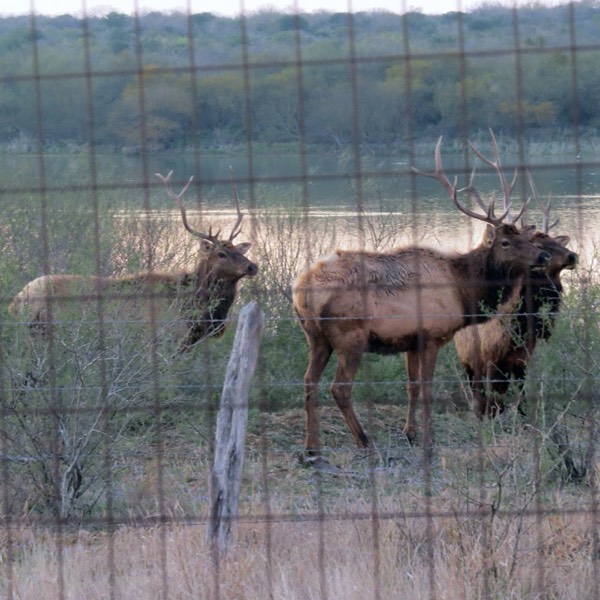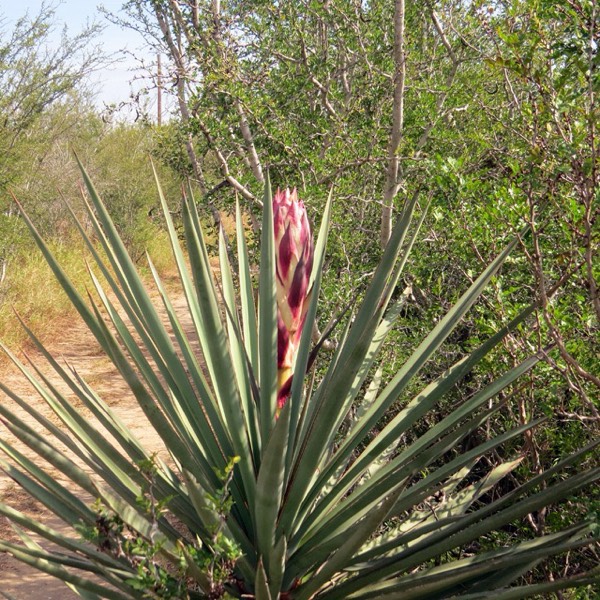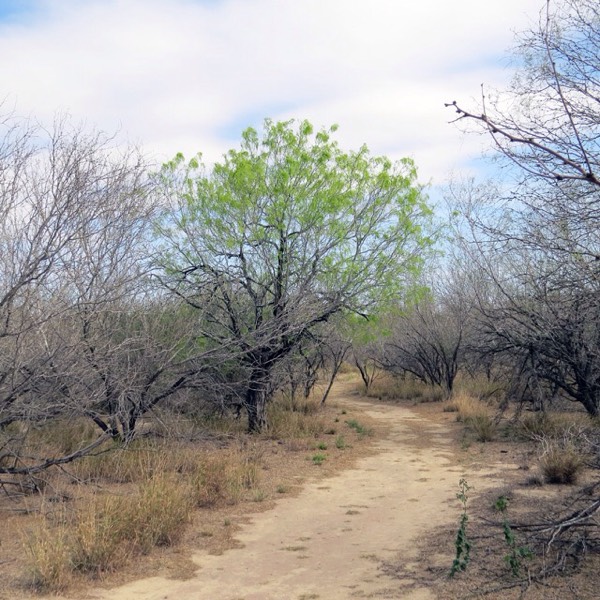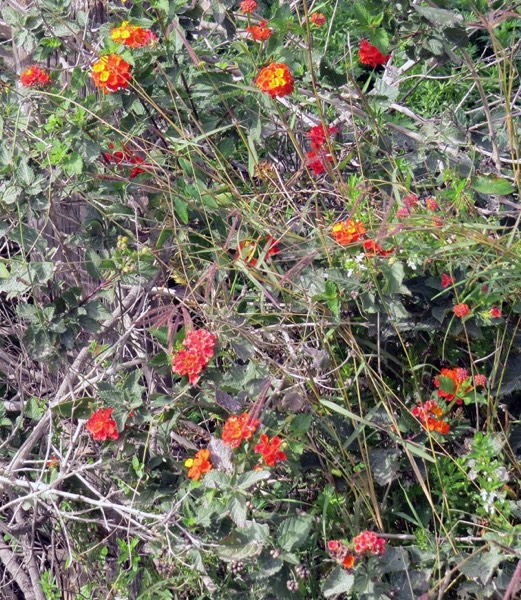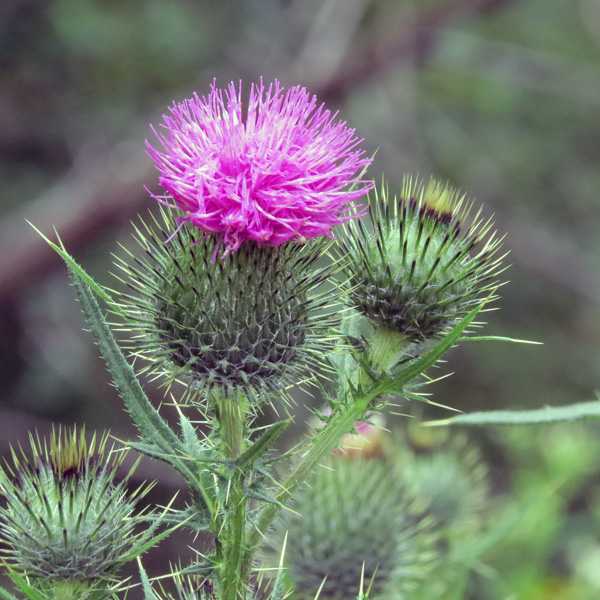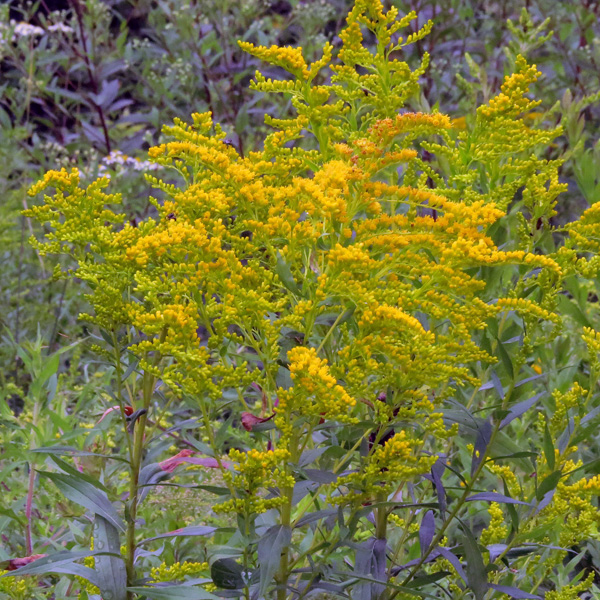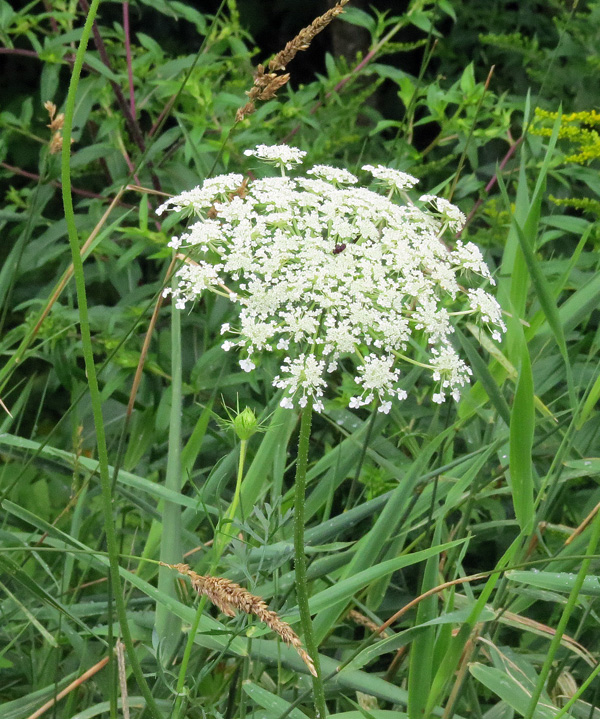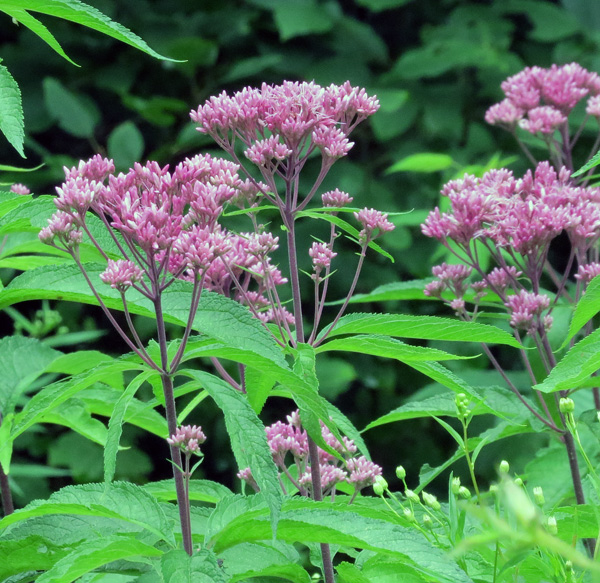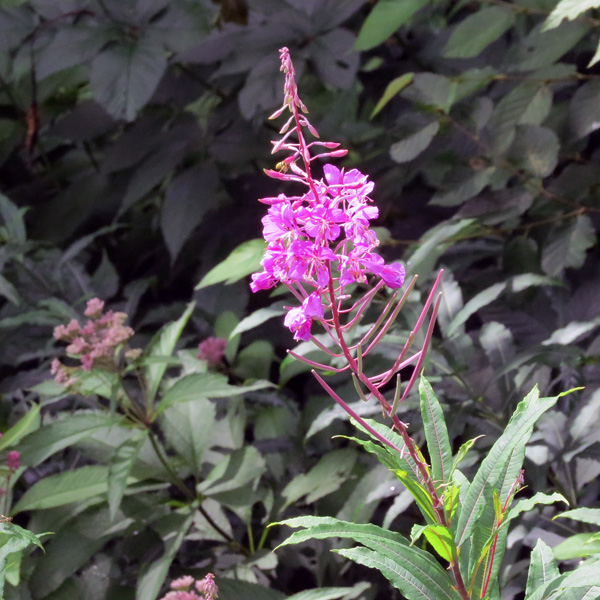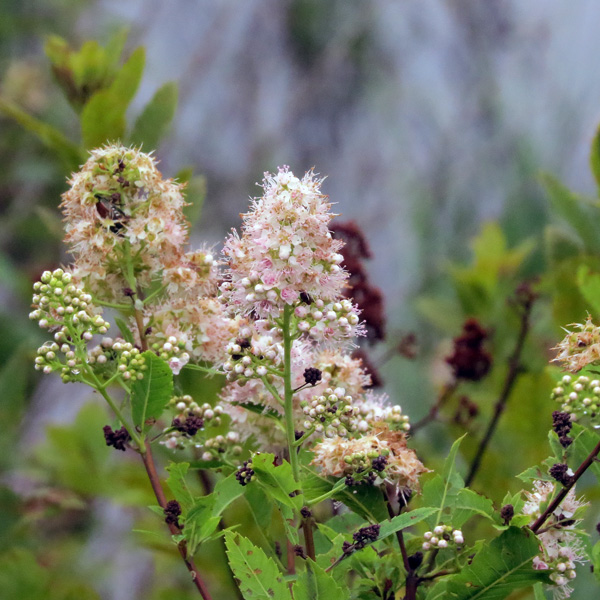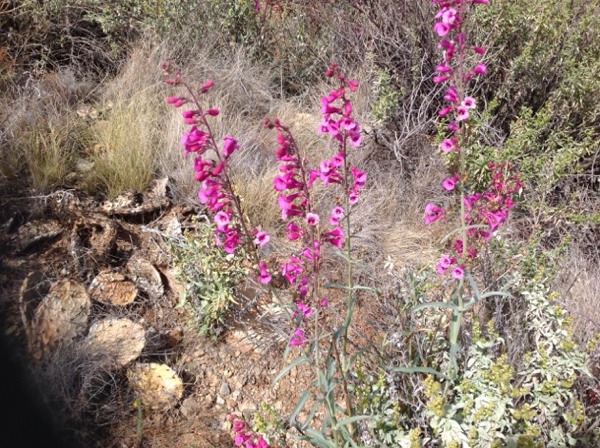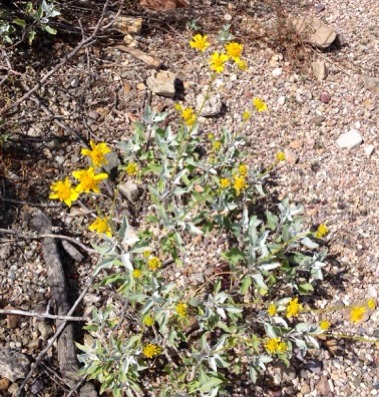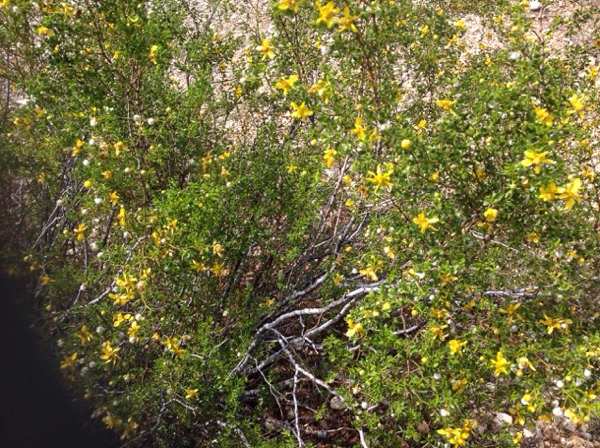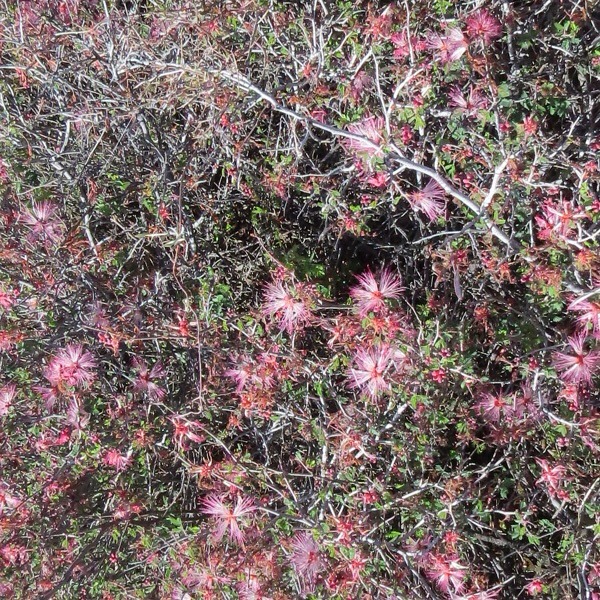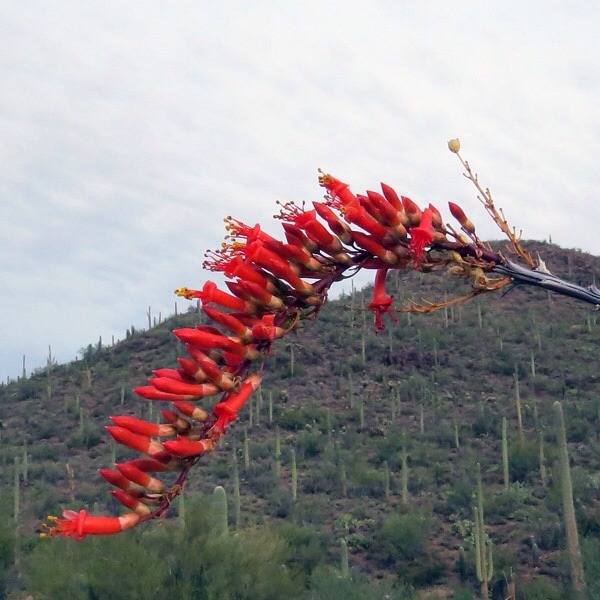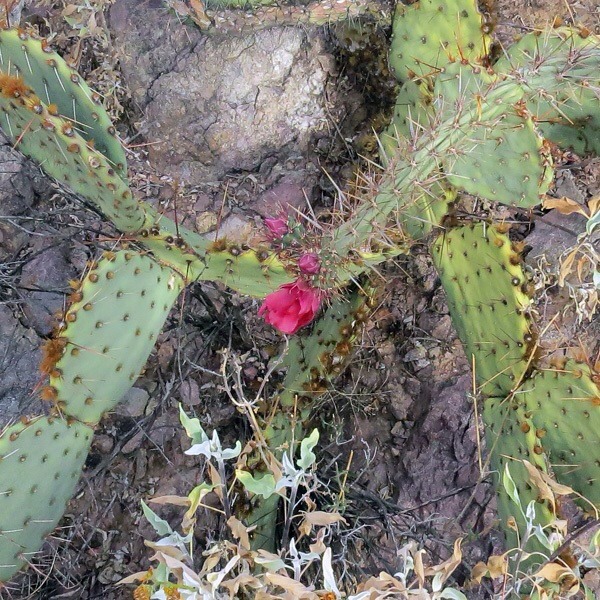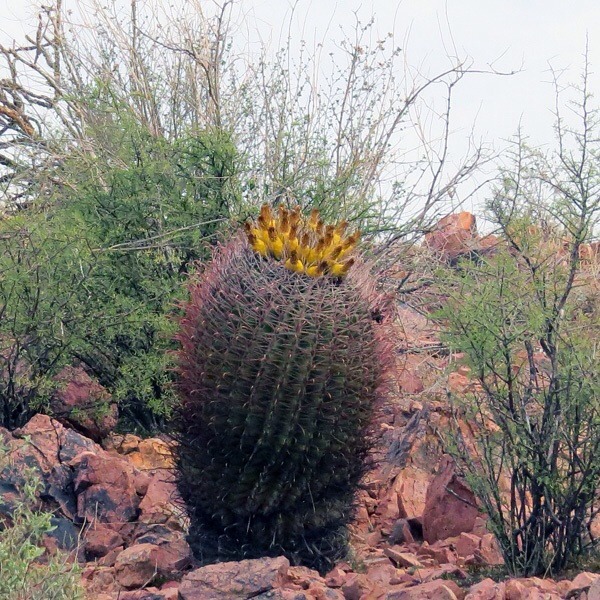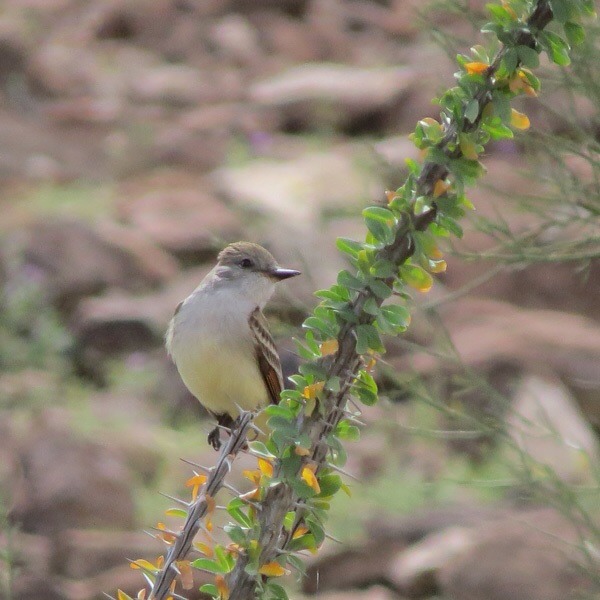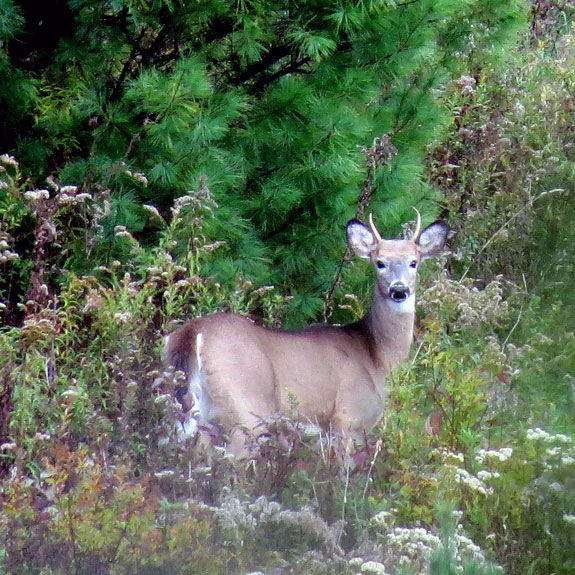After a hospital lab visit and some errands yesterday morning, I decided to visit a local area where I have never birded: Chickering Bog Natural Area located on the border of Calais and East Montpelier. It’s not too hard to find: see the directions at the end of this article.
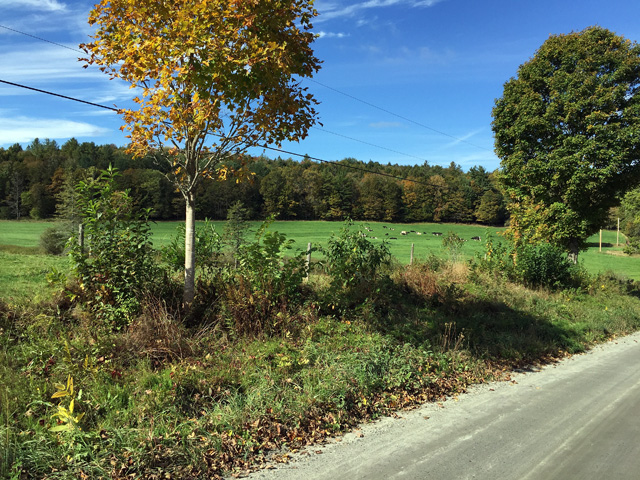
The scenery along Lightning Ridge Road is lovely.
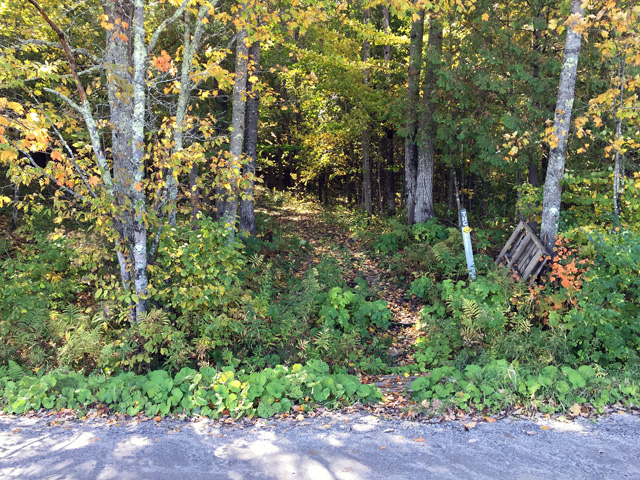
You have to look carefully for the entrance trail – I have missed it in the past.
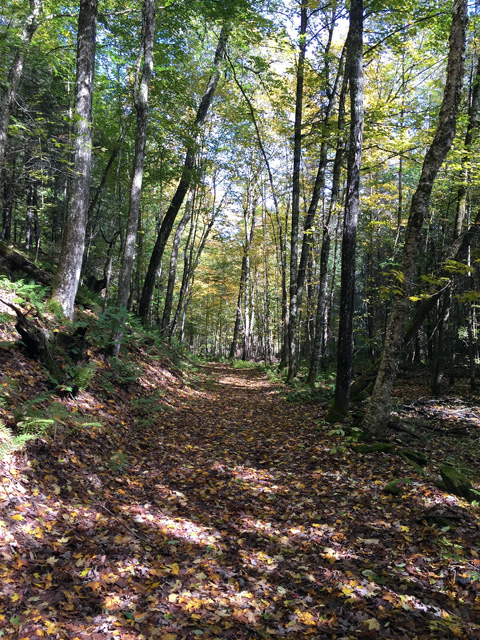
The trail is on private land at the start and also follows a snowmobile track. It’s easy walking with some debris from falling trees.
A friend reading this post wrote me to let me know that pets are not permitted on Conservancy sites — she had read the guidelines (which I had not) so Penny was a scofflaw. I must say that I don’t buy the policy at all – a least they could require leashes. In any case,so that you don’t make the same mistake, here are the guidelines:

Penny loved the woods and cavorted, as best as an eleven-year-old Vizsla can, as we moved up the trail. Bird activity was light with an inquisitive Downy Woodpecker following us chirping away. We flushed two Ruffed Grouse which always gets the bird dog excited.
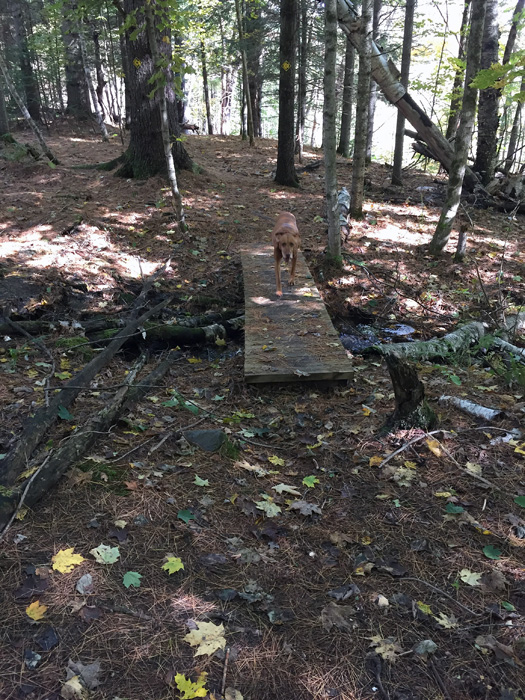
The trail’s wet spots are well-covered with planking. Here Penny is crossing a tiny brook.
After fifteen or twenty minutes, we entered the Natural Area which is managed by The Nature Conservancy.

The foliage is starting to turn and there were some pretty spots along the route.
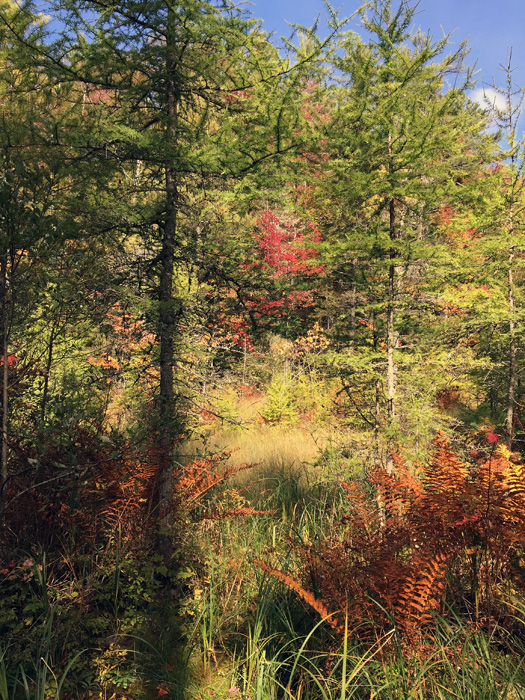
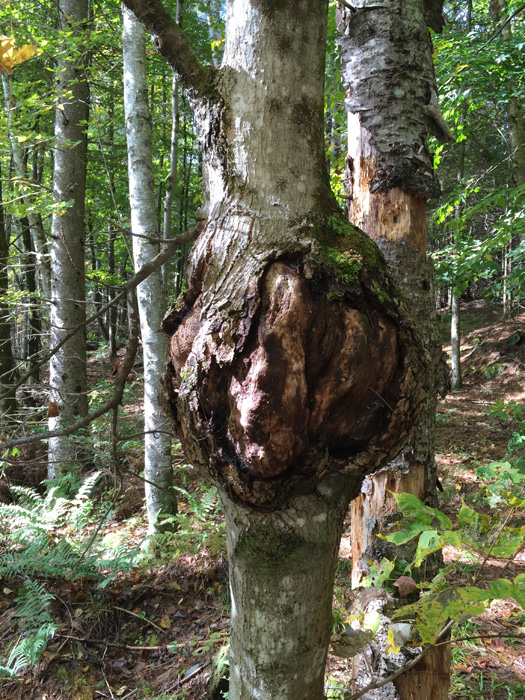
This tree alongside the trail has a problem. I always wonder what caused the blemish to form.
After a little over a half hour (it’s about a mile), we arrived at the bog and went out on the boardwalk looking for wildlife.
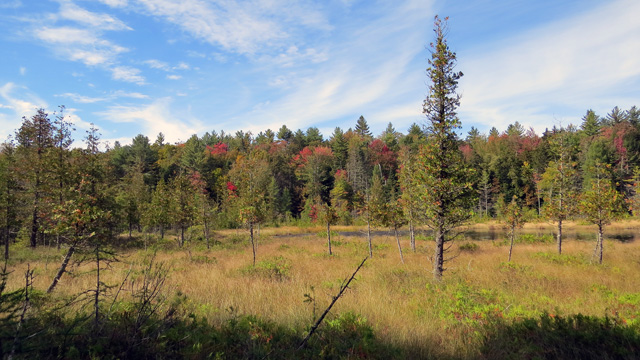
The bog was beautiful with fall colors starting, no bugs, no noise, no people – just a guy and a dog.
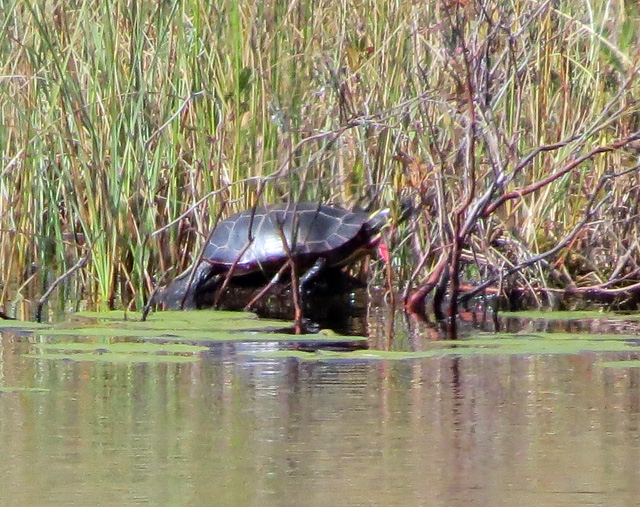
The only wildlife that I saw at the bog was this big turtle on the far edge of the open water.
From The Nature Conservancy page:
Chickering Bog began to form when glaciers receded from Vermont over 10,000 years ago and left behind a bedrock basin that filled with water. The pond that was formed slowly filled in with vegetation. As these plants died, they accumulated and only partially decomposed, forming a layer of peat that has continued to thicken over the years, reaching an impressive 30 feet deep in the northern part of Chickering Bog. It is the peat that gives the area its semi-solid, “quaking” quality. A small patch of open water is all that remains of the original pond.
Chickering Bog is actually misnamed; this so-called bog is really a fen. The difference between the two wetland types has to do with the water source and the acidity of the site. Bogs tend to be acidic and poor in dissolved minerals; fens are more alkaline and rich in dissolved minerals. Water enters bogs solely through rainwater, while fens like Chickering Bog are also fed by calcium-rich groundwater and springs.
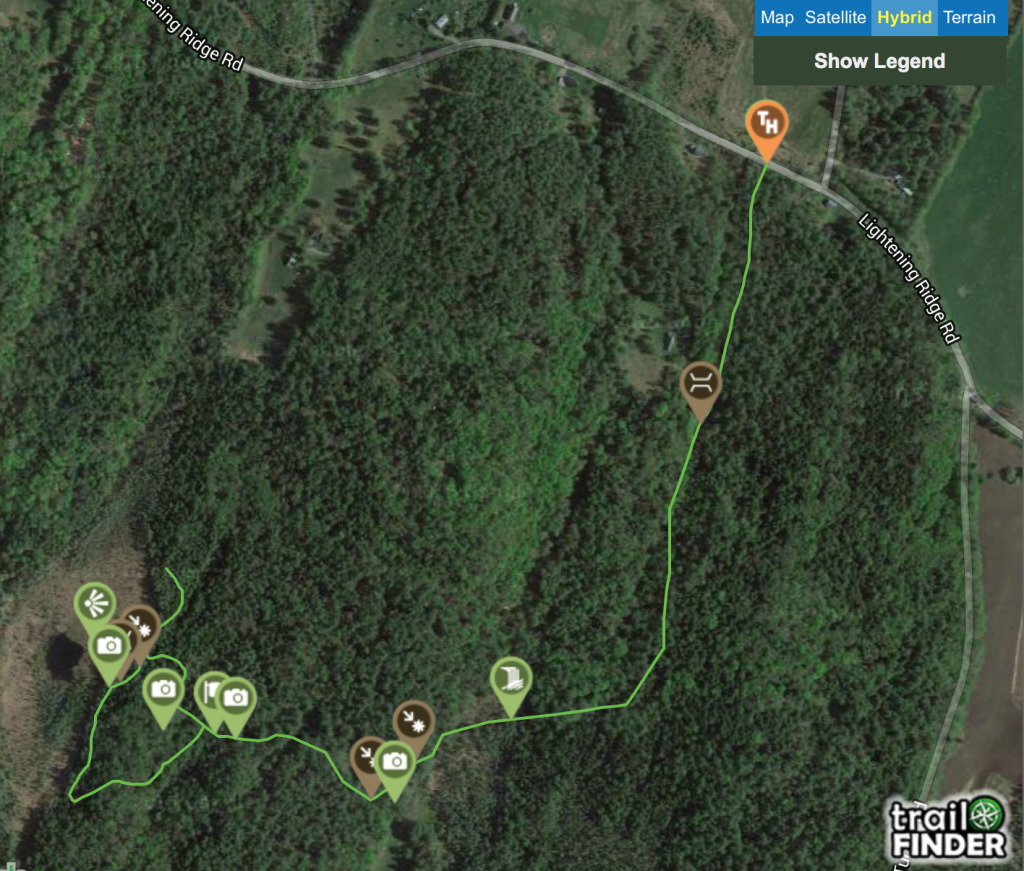 To get there from Montpelier, take Route 2 east 6.5 miles to East Montpelier. Then take Route 14 north about 3.2 miles to North Montpelier where you will see North Montpelier Pond on your right. Continue on Route 14 for 1.1 miles until you see Lightening Ridge Road on the left, which is marked by a sign for the Calais Elementary School. Turn left and go 1.6 miles to George Road on the right. Park on Lightening Ridge Road on the right a little past George Road. The Conservancy trail begins to the left of the private driveway. You have to look hard, but there is a green post with the initials “TNC.” A snowmobile trail starts here and goes up the hill to the entrance of the natural area and the trail to Chickering Bog. Look carefully for the sign that marks the Conservancy’s Chickering Bog trail after crossing a wetland on the snowmobile trail.
To get there from Montpelier, take Route 2 east 6.5 miles to East Montpelier. Then take Route 14 north about 3.2 miles to North Montpelier where you will see North Montpelier Pond on your right. Continue on Route 14 for 1.1 miles until you see Lightening Ridge Road on the left, which is marked by a sign for the Calais Elementary School. Turn left and go 1.6 miles to George Road on the right. Park on Lightening Ridge Road on the right a little past George Road. The Conservancy trail begins to the left of the private driveway. You have to look hard, but there is a green post with the initials “TNC.” A snowmobile trail starts here and goes up the hill to the entrance of the natural area and the trail to Chickering Bog. Look carefully for the sign that marks the Conservancy’s Chickering Bog trail after crossing a wetland on the snowmobile trail.
